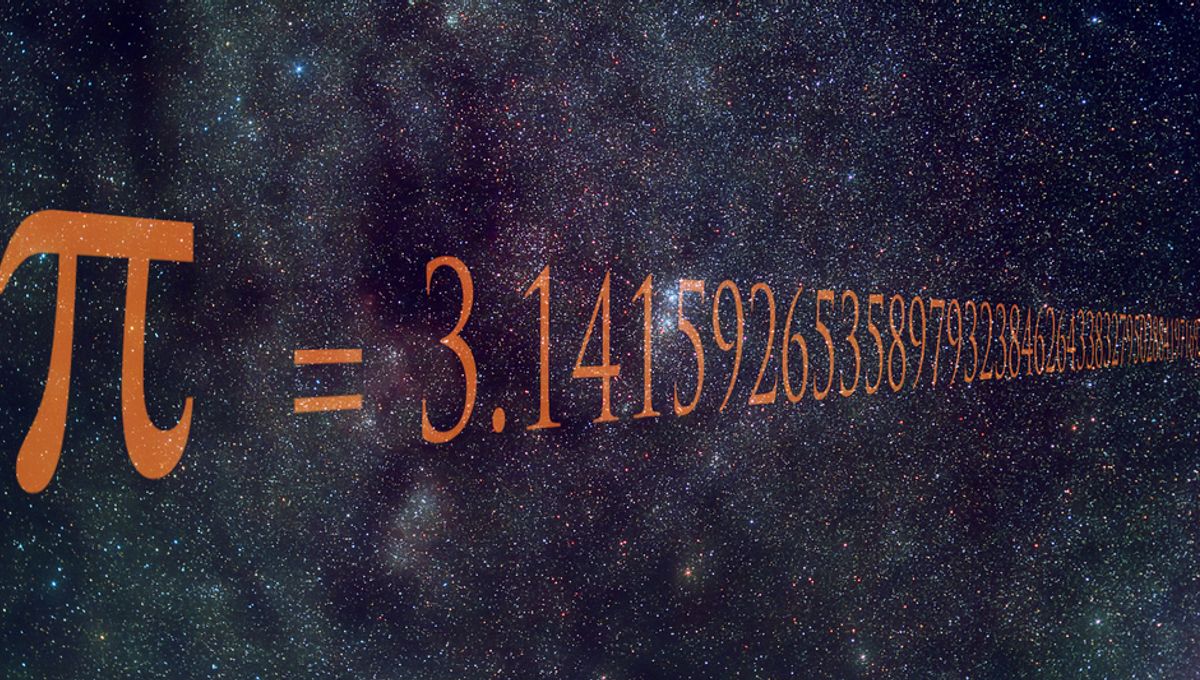just likes annoying Pythagoreans.
The reason pi is able to capture our imagination like this is because it is an irrational number – in other words, its decimal expansion is never-ending and entirely random. It’s thought that any sequence of numbers you can possibly think of can be found somewhere in the expansion of pi, and yet knowing any particular sequence somewhere in the expansion tells you no information about which digit comes next.
This might make the following sound almost unbelievable: for about a year now, there’s been a way to find any given digit of pi you happen to be interested in.
There’s a catch, of course: it relies on estimates for calculating the Euler and Bernoulli numbers – both sequences which can be quite time- and labor-intensive to calculate, and which grow so quickly that you’d be hard-pressed to even fit them into your calculator, let alone successfully manipulate them to find the 14th digit of pi.
But that’s not exactly the point of the result: “Not only is the formula true but it is also elegant and simple,” says Simon Plouffe, the mathematician who quietly uploaded his formula to the ArXiv preprint server in January 2022. “It is especially for base 2 that it is a beautiful formula. So, I think we can say that the formula is pretty cool.”
Pi in base two is something of a specialty for Plouffe, in fact: he’s the P in the BBP algorithm, a method of calculating the nth digit of the binary expansion of pi which he discovered all the way back in 1995.
. Now, he says, his groundbreaking discovery can be applied to any base imaginable: “By adjusting for base 10 or base 2 it is valid for all n,” he notes. “It can be done in any base if we want, for that I can adjust the formula quite simply.”
Similar to the 1995 result, this new formula is based on centuries-old knowledge that has been overlooked by most mathematicians. What sets this paper apart, besides the result itself, is its brevity: only six pages in total, excluding a short reference section. Instead of lengthy calculations or abstract proofs, Plouffe’s discovery relies on a fresh perspective on something old.
“It is possible because these Bernoulli numbers are very close to pi and powers of pi,” he explains. “The formula that connects them… I believe it must have originated from Euler.”
“They are intertwined to such an extent that if we isolate pi or pi to the nth power, we obtain a formula with the nth Bernoulli number. It is so precise that truncating at the nth position provides enough accuracy to confirm it as the nth decimal.”
Like many other revelations about this captivating mathematical constant, it is unlikely that this discovery will have practical applications. Even NASA’s most precise calculations for interplanetary navigation only require accuracy to about 16 significant figures. It’s also hard to envision a scenario where knowing the 143rd digit of pi, without any other information about the number, would be necessary.
However, for enthusiasts of pi and mathematicians alike, the significance lies not in the practicality of the result, but in the reminder that surprising mathematical discoveries can be found anywhere if we approach things with a fresh perspective.
When asked why this result remained unnoticed for so long, Plouffe admits, “I confess that I don’t know. To see or discover a property like that, you have to look with an eye that is searching for exactly that.”
“The information rnrn
The possibilities hidden within a formula are infinite… and they hold a wealth of untapped information,” he enthusiastically declares. “With enough contemplation, one might even stumble upon something entirely new.”
An earlier version of this article was published in January 2023.








